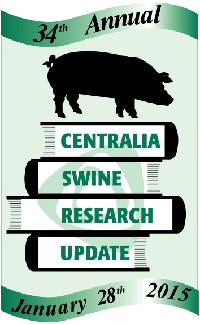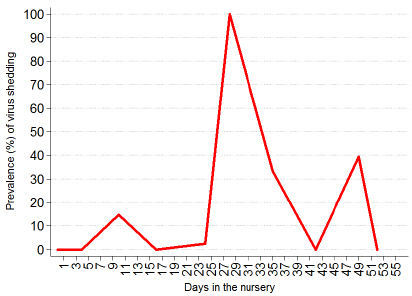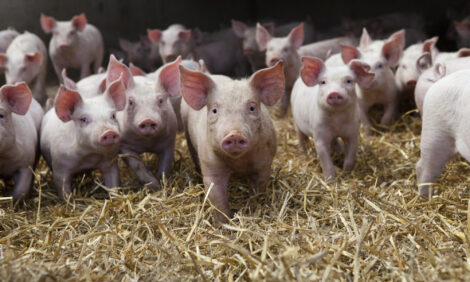



Swine Influenza: Unexpected Pattern of Infection in a Nursery
Swine influenza hit the nursery unit studied by University of Guelph researchers in a series of waves, Juliana Bonin Ferreira reported to the Centralia Swine Research Update 2015.
Introduction
Typical outbreaks of influenza in swine herds are characterized by abrupt onset of respiratory illness and quick resolution of clinical signs.
Recent field studies, however, indicate that circulation of influenza virus in individual animals may not be as simple as previously thought. The epidemiology of influenza in large multi-site and multi-source herds is not well described.
Therefore, the purpose of this study is to describe the dynamics of influenza virus circulation in a nursery herd with multiple sow sources under commercial conditions.
Material and Methods
The nursery barn included in the study was a 2,000-head nursery operated as all-in/all-out by barn facility. Pigs were sourced from five different sow herds, each with a different health status, and were mixed in four rooms (each with 20 pens).
Within two hours of arriving at the nursery barn, 400 pigs were selected for the initial virological testing. In addition, 81 pigs were included in the longitudinal study for ongoing weekly testing for influenza virus.
Pigs were followed from 18 November 2013 to 9 January 2014.
Growing and isolation of the virus was done using Madin-Darby canine kidney (MDCK) cells.
Temperature and relative humidity were measured every five minutes using HOBO data loggers. The mean temperatures in all three rooms were similar (23°C to 24°C), whereas the mean relative humidity ranged between 70 and 77 per cent.
Results
No pigs tested positive for influenza virus at the first sampling but all pigs included in the longitudinal study were virus-positive at some point in time, with some animals being positive more than once (Figure 1).
A difference could be observed in positivity of pigs among the five sources of pigs (Figure 2).
Pigs from Source 1 had more virus-positive tests than those from Source 5. In contrast, pigs from Sources 2 and 4 were less likely to have virus-positive tests than those from Source 5. Pigs from Source 3 were not different from those from Source 5.


Discussion
The level of virus shedding was dependent on the source of pigs supplied to the nursery.
Since all pigs were negative at first sampling, it is impossible to determine where the virus came from.
This case did not follow a regular outbreak pattern. The authors expected a rapid spread to all pigs and then all the pigs recovering at about the same time, not several separate waves of illness.
Possible explanations include the presence of two or more different influenza strains, or the disappearance of passive immunity occurring at different rates, or a combination of factors.
The authors are currently investigating possible causes of the unexpected pattern of disease. The findings will be useful in developing control strategies.
Acknowledgements: OMAFRA, Ontario Pork, Swine Innovation Porc and Agriculture and Agri-Food Canada through Swine Cluster II program. The authors appreciate the help of participating producers.
Reference
Ferreira J.B., Grgic H., Friendship R., Wideman G., Nagy E and Poljak Z. 2015. Swine influenza – the pattern of infection in a nursery, not what you would expect. Proceedings of 34th Annual Centralia Swine Research Update. 28 January 2015. I-21-I22.
Further Reading
You can view other papers from the Centralia 2015 Update by clicking here.
For more information on swine influenza, click here.
April 2015








